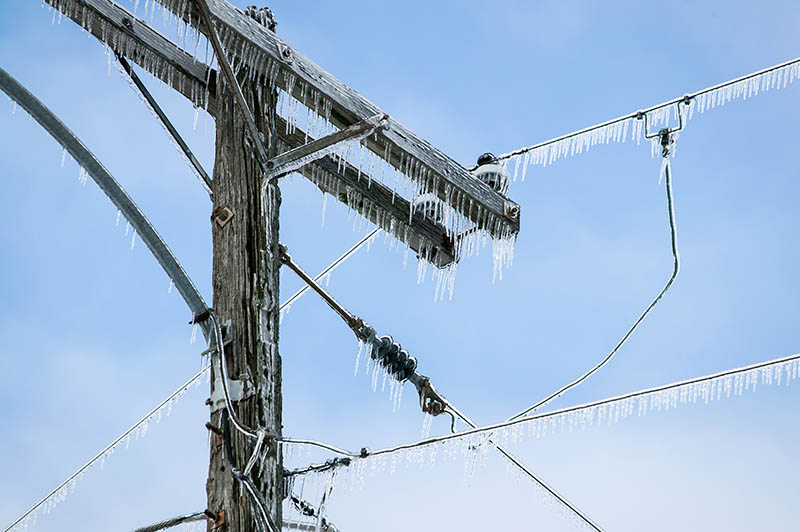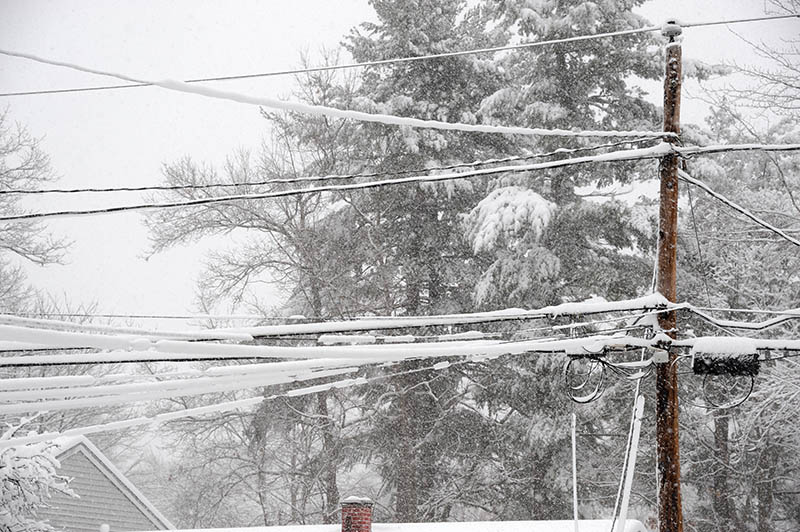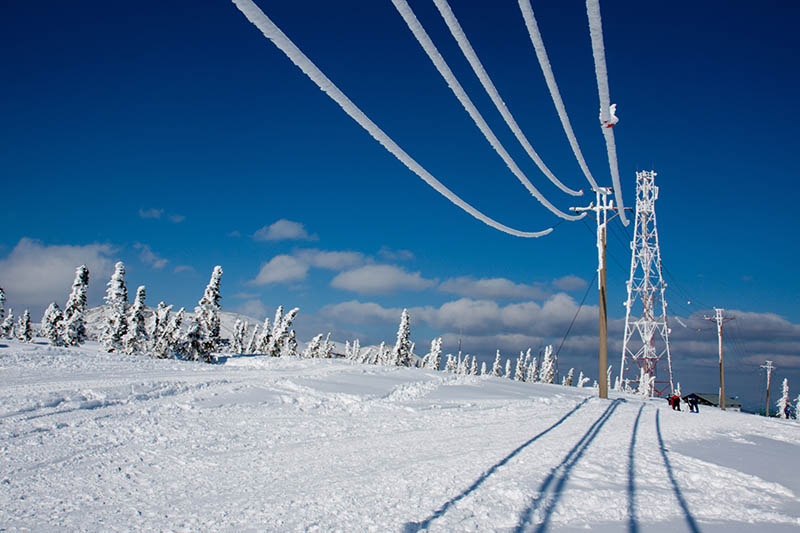How Much Ice Can Power Lines Handle: All You Need to Know!
-

- Last updated:

Snow storms, tornadoes, and even hail can wreak serious havoc on our infrastructure. In fact, in 2021 alone, winter storms caused a staggering $15 billion worth of damage. But while we love to focus on buildings and structural damage, we should pay more attention to our electrical infrastructure.
The United States has built a large network of power grids, power plants, substations, power lines, and poles to ensure citizens get as much electricity as they need. The power lines are designed to withstand heavy winds, rain, snow, and even the occasional lightning strike. But what about ice? Can power lines handle the weight of thick layers of ice without collapsing?

How Much Ice Can Power Lines Handle?
The answer to this question is more complex than you might think. To understand power line damage caused by ice, we need to look at the different types of power lines out there and what makes them susceptible to collapse.
On the one hand, some power lines run directly above or below ground, such as underground and overhead power lines. Power plants, substations, and other pieces of electrical infrastructure are also exposed to the elements, which means they have to withstand snow, ice, rain, and high winds.
On the other hand, some power lines run through power poles or utility poles. These power lines are typically insulated from the ground, which means they can withstand a bit more ice than power lines that run directly above or below. Even so, power poles and utility poles are not immune to falling under the weight of heavy snow and ice.

Factors Determining the Amount of Ice a Power Line Can Handle
Several factors determine the amount of ice a power line can handle without falling. These include:
1. The Type of Power Line in Use
Overhead power lines and underground power lines are typically more vulnerable to ice damage than power poles or utility poles, which tend to be insulated from the ground. The more exposed a power line is to ice, the more likely it is to collapse under the weight.
2. The Thickness of the Ice Layer
Power lines and power poles are typically designed to withstand snow and ice up to a certain thickness, but once they reach this threshold, they can be at risk of falling. As the thickness of the ice accumulates, so does the weight, putting power lines at risk of damage.
A 920-foot span 354kV transmission line registered the following drops:
- Half an inch of ice: 4-foot drop
- Three-quarters an inch of ice: 6.2-foot drop
- One inch of ice: 8.6-foot drop
- One and a quarter inch of ice: 11.6-foot drop
- The temperature and climate conditions
Temperature and weather can also have an effect on power lines, in addition to the thickness of the ice layer. For example, power lines in warmer climates will likely withstand more ice than power lines in colder climates since the cold temperatures make it difficult for ice to accumulate.
Similarly, power lines that are exposed to extreme temperature fluctuations may be more likely to collapse under the weight of ice than power lines exposed to minor temperature fluctuations.
3. Wind Conditions
Wind makes ice freeze faster and thus increases the likelihood of power lines collapsing under the weight of ice. As such, power lines in windy places are more likely to experience power outages and damage compared to power lines in less windy environments.

What Steps Has the DOE Taken to Weatherproof Power Lines?

To combat power outages and power line damage caused by ice, the Department of Energy has taken a number of steps to weatherproof power lines. Some of these steps include:
Power Line Insulation Materials
One of the primary ways power companies protect power lines from ice damage is by using materials that insulate power lines and power poles, such as plastic or rubber. These materials resist temperature changes, making it hard for a lot of ice to settle on them.
Using Ice-Deterring Technologies
In addition to insulation materials, power companies are also using new technologies to weatherproof power lines. These technologies include power line heaters, which prevent power outages by preventing ice from accumulating on the lines, and power line spreading devices, which help distribute the weight of snow and ice evenly across power poles.
Upgrading Power Plants and Power Substations in Colder Climates
Power companies in colder climates are also investing in upgrades and retrofits for power plants and power substations to improve resistance against snow and ice. These upgrades include using insulating materials and installing heaters around power lines to prevent damage from ice build-up. They’re also thickening power lines and power poles to handle greater loads of ice.
Overall, power companies are taking a number of steps to protect power lines from damage caused by ice and snow storms. By using insulation materials, newer technologies, and retrofits for power plants and power substations, power companies are better able to weatherproof their power lines against the effects of freezing temperatures.
Using Smart-Grid Systems to Predict Ice-Caused Outages
In addition to weatherproofing power lines against ice and snow, power companies are also using smart-grid systems to predict power outages before they occur. These systems use sensors and monitoring devices to detect changes in power consumption or power line usage patterns, which can help power companies identify areas at risk of power outages because of ice build-up and then take steps to prevent power outages from happening.

Final Thoughts
So ultimately, the answer to how much ice power lines can handle really depends on a number of factors. If you live in an area prone to heavy snow and ice storms, it is important to take steps to protect your power lines from damage. This can include investing in power line insulation or power pole sturdiness upgrades.
Featured Image Credit: ArtBitz, Shutterstock
Contents
